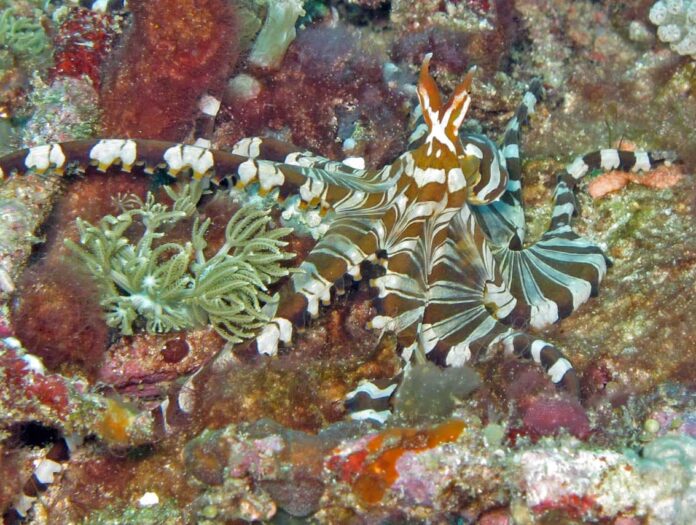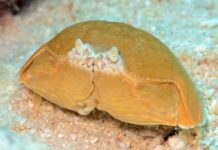Wunderpus octopus is one of the most impressive animals with the mimicry ability, and it also comes with the look. There are always so many impressive traits in octopus, and this one comes with just that. The name says it all as well, Wunder literally means marvel or wonder in German, and there is a lot to see in them. We will see some cool facts about the wunderpus below, feel free to share your thoughts.
1Appearance
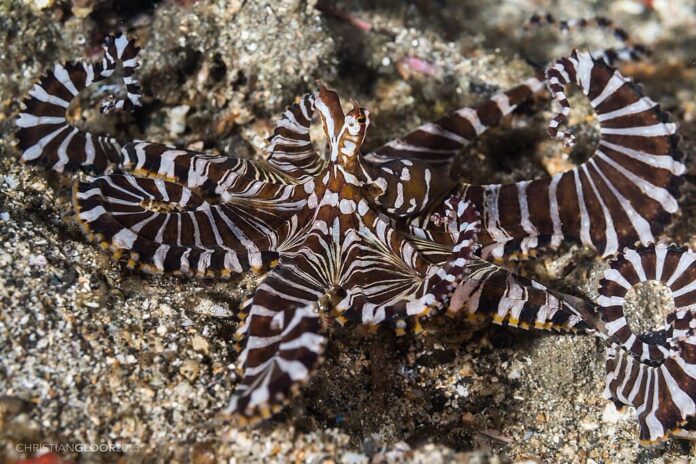
Being at just the right size, this beautiful creature grows up to around 22.9 centimeters with an arm span of 40.6 centimeters. The arms are 5 to 7 times the length of its mantle, and they are extremely useful for hunting. More than that, it can also drop its arm to confuse the predator, and regenerate the lost limb later. If we look at the head, a wunderpus octopus has small eyes atop long stalks, giving a very unique appearance. Each wunderpus octopus has unique white and rusty brown patterns that look very similar to the mimic octopus. This coloration contrasts each other in a unique pattern of white bands and spots over a rusty brown background. Also, there are more white bands and markings all over the body as the octopus gets older.
2Behavior
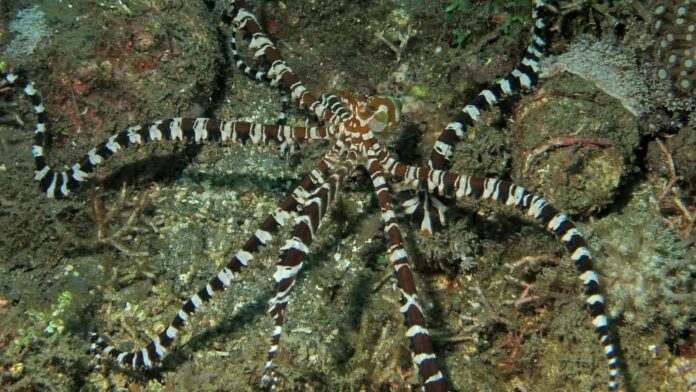
As a master of mimicry, a wunderpus octopus can alter its color patterns and shape to mimic other sea animals when disturbed. The quick switch in colors, shapes, and movements allows the octopus to blend in with its surroundings or mimic a venomous species. So what animals can they imitate? The most common ones are banded sea kraits and lionfish. The white bands of the octopus can easily mimic the spines and stripes of the lionfish. On top of that, they will burrow 6 of their 8 arms and the remaining 2 to mimic the sea krait.
Wunderpus octopuses are quite aggressive towards other octopuses, especially the mimic octopus. A wunderpus octopus will use its longest arm to form a loop around its opponent, tighten the loop, and strangle it. This constriction also prevents their opponent from releasing its ink as well, making it completely helpless. Doing so prevents the flow of water into the mantle and out of the funnel, meaning there’s no oxygen. The opponent will eventually die from oxygen depletion.
3Feeding & Habitats
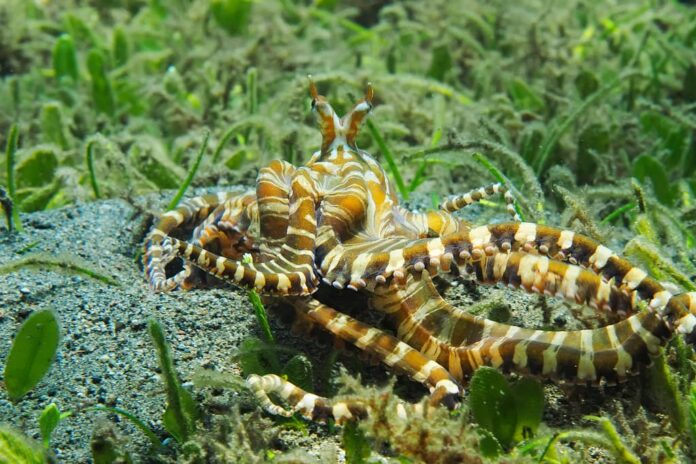
Their feeding time is from dusk to dawn, and their favorite meals are fishes and small crustaceans. The cool part is that they have two interesting feeding methods: the probing and the web-casting methods. The probing method is when it extends its arms to crevices and holes to look for prey. When finds one, it will use its arms and suckers on them to hold onto the prey and extract it from the burrow. As for the web-casting method, a wunderpus octopus will flare its arms and webs over coral and sand to trap prey. This method makes it look like an umbrella which is quite fascinating to look at. As an intelligent sea creature, wunderpus octopus does not feed out in the open. It retracts back into its shelter to feed to avoid being exposed to predators.
Wunderpus octopus is very common in shallow waters of Bali and Sulawesi all the way to the Philippines and Vanuatu. As benthic creatures, they usually live along the bottom sediments where they can burrow under the substrate. Some wunderpus octopuses dig their own burrows while some others occupy the burrows of other animals. The predators in their natural habitats are flounders, mantis shrimps, and scorpionfishes. Their population is doing well so there is nothing to be concerned about.
Related Post: Striped Pajama Squid Facts

